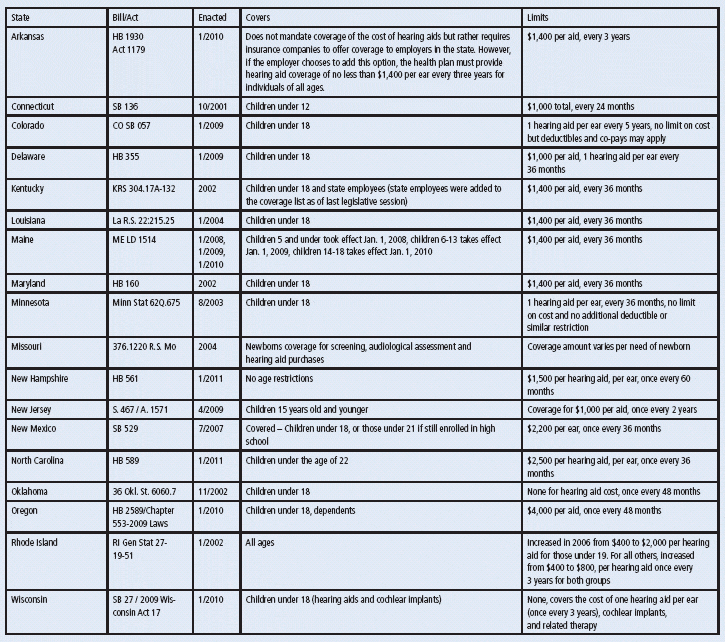Source: Hearing Industries Association (HIA), Washington, DC

Commentary from the Hearing Loss Association of America (HLAA), Bethesda, Md:
The above chart shows 18 states have enacted hearing aid insurance coverage legislation. Only two include adults and many have limitations, such as only for newborns, or for children under 12, or 15, or 18. What happens when you reach the age limit? Do you just stop needing to hear? Actually getting these laws passed took a huge effort on the part of consumer and professional advocates who often formed coalitions in the states to make it happen.
Apart from the age limitations when you actually delve into the laws there are even more limitations that are not evident initially. You will see that self-insured programs are exempt. Self-insured programs typically are companies that put together their own coverage from a smorgasbord of offerings from a particular insurance company. They are major companies that employ large segments of the state population. So according to these state laws, a big section of families will not be covered. Sad but true.
Nevertheless it is a start.
HLAA encourages employees with hearing loss or with dependents with hearing loss to advocate with their benefits manager or employer to include hearing aids in the basic insurance benefit package that their company offers. These plans are customized and it is possible to add coverage. It often just needs someone to advocate hard and loud for hearing aid coverage.
Consumers and professionals need to band together to get more insurers to cover, at least partially, the cost of hearing aids. Consumers should be given the option of paying the difference if they can afford it, towards a more expensive aid that has been recommended by their hearing health professional.
—Brenda Battat, executive director, and Lise Hamlin, director of public policy and advocacy, HLAA
Citation for this article:
Battat B, Hamlin L. State hearing health insurance mandates: Commentary from HLAA. Hearing Review. 2011;18(2):52.





